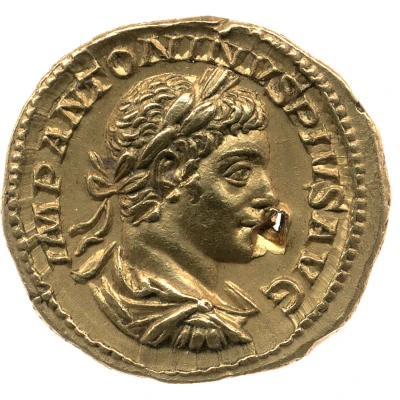


© Trustees of the British Museum
Aureus - Elagabalus LIBERTAS AVG; Libertas
| Gold | 6.4 g | - |
| Issuer | Rome › Roman Empire (27 BC - 395 AD) |
|---|---|
| Emperor | Elagabalus (Sextus Varius Avitus Basianus) (218-222) |
| Type | Standard circulation coin |
| Years | 218-222 |
| Value | Aureus (25⁄2) |
| Currency | Antoninianus, Reform of Caracalla (AD 215 – 301) |
| Composition | Gold |
| Weight | 6.4 g |
| Shape | Round (irregular) |
| Technique | Hammered |
| Demonetized | Yes |
| Updated | 2024-10-05 |
| Numista | N#276722 |
|---|---|
| Rarity index | 100% |
Reverse
Libertas, draped, standing left, holding pileus in extended right hand and sceptre in left hand; sometimes in field, star.
Script: Latin
Lettering: LIBERTAS AVG
Translation:
Libertas Augusti.
Freedom of the emperor (Augustus).
Comment
Example of this type:Trustees of the British Museum
Source:
Online Coins of the Roman Empire (OCRE)
Interesting fact
One interesting fact about the Aureus - Elagabalus (LIBERTAS AVG; Libertas) coin is that it features the goddess Libertas, who was a symbol of freedom and liberty in ancient Rome. The coin's design was meant to promote the idea of freedom and independence, which was an important concept during the reign of Emperor Elagabalus. Despite being made of gold, the coin was widely used in circulation and was an important part of the Roman Empire's economy during that time.